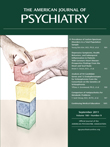T
o the E
ditor: Drug shortages have become more common in recent years, and in 2009, 46% of scarce agents were intravenous drugs (
1). The preferred muscle relaxant for ECT is succinylcholine, whose fast action and short half-life make it ideal for this brief procedure (
2). Although deliveries of succinylcholine continue, there is no guarantee that production can be maintained to meet current demand. Nondepolarizing muscle relaxants are an alternative to succinylcholine. However, these agents have longer half-lives and require reversal with an acetylcholinesterase inhibitor such as neostigmine and a muscarinic antagonist such as glycopyrrolate or atropine. (Sugammadex, which rapidly reverses neuromuscular blockade by rocuronium without relying on the inhibition of acetylcholinesterase, is not approved by the U.S. Food and Drug Administration [
3]). Accordingly, use of nondepolarizing muscle relaxants for ECT anesthesia introduces the risk of prolonging treatment and adverse effects.
The ECT Task Group of the National Network of Depression Centers (NNDC), a network of 22 depression and bipolar disorder experts in geographically dispersed academic medical centers, has been tracking the shortage of succinylcholine and its effects across the network of sites. Half of these sites reported shortages lasting from a few weeks to 2 months; some sites needed to reactively conserve while others ran out for periods of time. Some anesthesiologists are reluctant to use alternatives because the risks of using nondepolarizing agents outweigh the risks of not administering ECT. Consequently, ECT was temporarily unavailable for new cases at some hospitals, including in some U.S. Department of Veterans Affairs facilities (T. Khazan, personal communication, June 2011). The unpredictability of the supply of succinylcholine has led the NNDC to focus on two major issues: how best to conserve supplies of succinylcholine and possible alternatives during this shortage.
Strategies to conserve supply include reserving succinylcholine for high utilizers, such as ECT programs. In addition, seldom-used supplies in emergency carts have been reduced and shunted to ECT services. Pharmacies have ordered smaller single-use doses or have split larger doses. Finally, ECT practitioners have reduced their use by attempting to stay on the lower end of the recommended dose range for ECT (0.75–1 mg/kg).
Despite succinylcholine being the preferred ECT muscle relaxant, other nondepolarizing agents such as atracuronium, cisatracuronium, pancuronium, rocuronium, and vecuronium can be used (
2). Rocuronium has the fastest onset of action and a relatively brief recovery of twitch response following reversal (
4). In a recent small study of thirteen patients, a rocuronium dose of 0.3 mg/kg was used in a cross-over design with succinylcholine (
4). Rocuronium is a nondepolarizing muscle relaxant with an action onset time of 1–2 minutes, although time to peak action tends to be longer. The dose of rocuronium in this study was lower than that typically used for rapid sequence induction (0.6 mg/kg), and it was reversed with neostigmine (20 μg/kg) and atropine (10 μg/kg). The study found that the time before the first spontaneous breath was significantly longer in the rocuronium group compared with the succinylcholine group (9.46 minutes and 8.07 minutes, respectively, p=0.02). Otherwise, rocuronium was found to be a safe alternative to succinylcholine with no significant hemodynamic differences.
Rocuronium has been used at six of 22 NNDC sites at various doses in recent months. These centers have reported that ECT recovery time is longer with rocuronium than with succinylcholine, and patients require repeat boluses of an anesthetic agent. Nonetheless, one patient recalled feeling weakness. Also, in contrast to the study by Turkkal et al. (
4), NNDC sites reported several adverse effects related to the combination of neostigmine and atropine or glycopyrrolate, including urinary retention and incontinence, fecal incontinence, worse postictal delirium, and more bradycardia and hypotension. As ECT itself induces acute autonomic changes, ECT patients may be more vulnerable to adverse effects associated with posttreatment reversal agents that modulate parasympathetic tone.
A review of practices at our centers suggests that the following approach could be helpful when using rocuronium:
•.
Use a dose of 0.25–0.3 mg/kg.
•.
Administer rocuronium within 30 seconds of the anesthetic agent and wait 4 minutes for its full action, monitoring muscle twitch response to peripheral nerve stimulation.
•.
Reverse rocuronium with 20 μg/kg of neostigmine. If the patient has received glycopyrrolate pretreatment, then reversal may not be needed after treatment. Clinicians should nevertheless watch for bradycardia.
ECT clinicians need to be aware of current drug shortages and how they may affect ECT practice. Collaborating with local institutional pharmacies and anesthesiology colleagues is vital to staying abreast of shortages and to developing contingency plans to conserve succinylcholine. Nondepolarizing muscle relaxants like rocuronium have a slow onset of action and longer half-lives, and reversal agents introduce risks of adverse effects as well. Although there are no formal risk-benefit analyses that assess the use of these alternative agents compared with delaying ECT, we believe that ECT should not be withheld because of lack of succinylcholine, as our most severely ill patients often urgently depend on ECT. Agents like rocuronium can be used safely with a proper understanding of pharmacology to minimize the risk to patients. Therefore, ECT clinicians need to be knowledgeable about the use of alternative muscle relaxants and should discuss these alternatives with their anesthesiology team members.
Acknowledgments
The authors thank Oscar G. Morales, M.D., Richard D. Weiner, M.D., Ph.D., and John F. Greden, M.D., for reviewing the letter and members of the ECT Task Group of the National Network of Depression Centers for sharing their experiences during the succinylcholine shortage.

